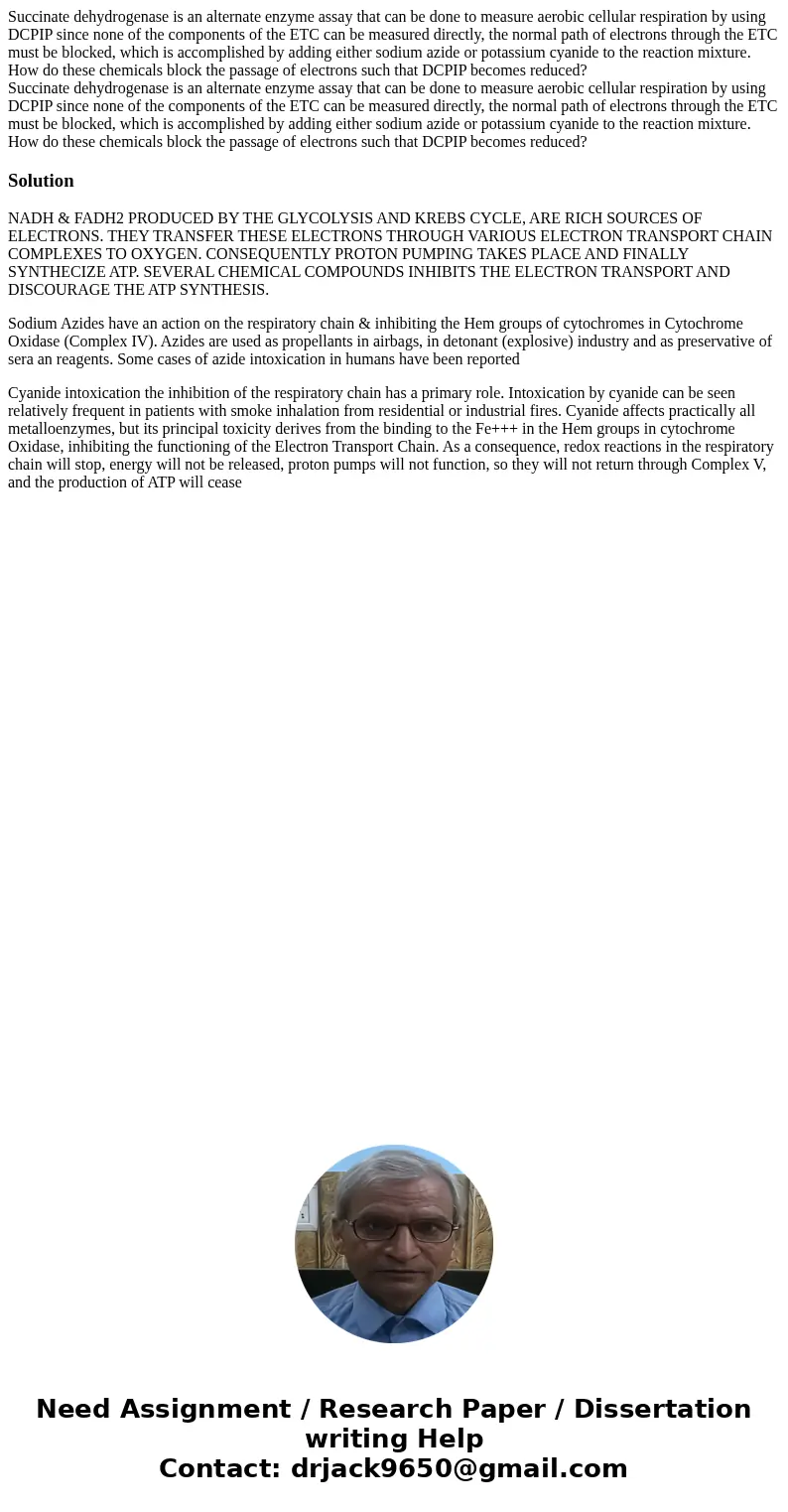Succinate dehydrogenase is an alternate enzyme assay that ca
Solution
NADH & FADH2 PRODUCED BY THE GLYCOLYSIS AND KREBS CYCLE, ARE RICH SOURCES OF ELECTRONS. THEY TRANSFER THESE ELECTRONS THROUGH VARIOUS ELECTRON TRANSPORT CHAIN COMPLEXES TO OXYGEN. CONSEQUENTLY PROTON PUMPING TAKES PLACE AND FINALLY SYNTHECIZE ATP. SEVERAL CHEMICAL COMPOUNDS INHIBITS THE ELECTRON TRANSPORT AND DISCOURAGE THE ATP SYNTHESIS.
Sodium Azides have an action on the respiratory chain & inhibiting the Hem groups of cytochromes in Cytochrome Oxidase (Complex IV). Azides are used as propellants in airbags, in detonant (explosive) industry and as preservative of sera an reagents. Some cases of azide intoxication in humans have been reported
Cyanide intoxication the inhibition of the respiratory chain has a primary role. Intoxication by cyanide can be seen relatively frequent in patients with smoke inhalation from residential or industrial fires. Cyanide affects practically all metalloenzymes, but its principal toxicity derives from the binding to the Fe+++ in the Hem groups in cytochrome Oxidase, inhibiting the functioning of the Electron Transport Chain. As a consequence, redox reactions in the respiratory chain will stop, energy will not be released, proton pumps will not function, so they will not return through Complex V, and the production of ATP will cease

 Homework Sourse
Homework Sourse